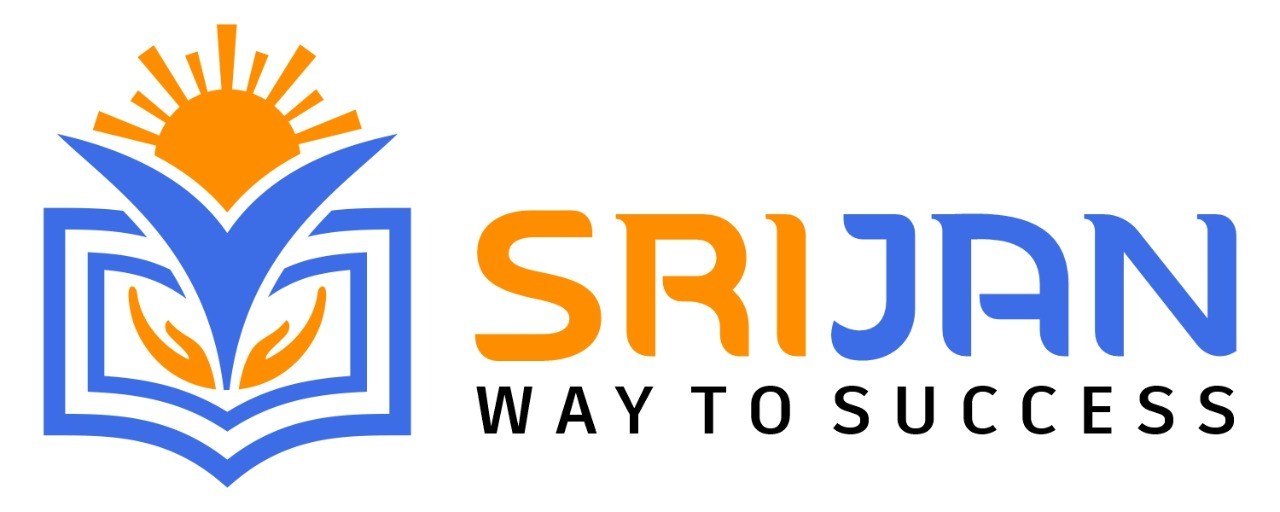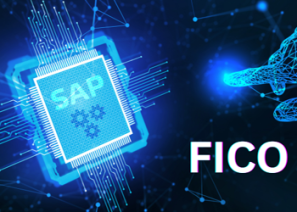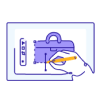SAP RAR Online Course: Build Skills in Revenue Accounting and Reporting
SAP RAR Training || SAP RAR certification Training || SAP RAR Online training || SAP RAR self-paced training || SAP RAR Instructor-Led training
Key Features of Training:
- 25 Hrs Instructor-led Training
- Mock Interview Session
- Project Work & Exercises
- Flexible Schedule
- 24 x 7 Lifetime Support & Access
- Certification and Job Assistance
SAP RAR(Revenue Accounting and Recognition):
SAP RAR (Revenue Accounting and Recognition) is a comprehensive solution designed to manage and automate revenue recognition processes for businesses. It ensures compliance with evolving accounting standards, such as IFRS 15 and ASC 606, by providing a centralized platform for revenue management. SAP RAR integrates seamlessly with existing SAP ERP systems, offering real-time insights into revenue streams, contracts, and performance obligations. The solution facilitates accurate and transparent revenue recognition, reduces manual errors, and enhances financial reporting. By aligning revenue recognition with business processes, SAP RAR enables organizations to achieve compliance, streamline operations, and make informed strategic decisions in the dynamic landscape of revenue accounting.
Prerequisites: Who can attend SAP RAR Training?
- Finance Professionals
- SAP Users
- Business Analysts
- ERP Consultants
- IT Professionals
- Good Communication Skills
Responsibilities of SAP RAR Consultant:
- Requirements Analysis
- Implementation
- Integration
- Training
- Data Migration
Course Benefits:
- Job opportunities
- Promotion opportunities (Salary Hike)
- Increased productivity
- Improved decision-making
- Gain in-demand skills
What is the future of SAP RAR Consultant?
- Increasing Demand for Compliance Solutions
- Integration with Emerging Technologies
- Globalization and Diverse Business Models
- Continuous Regulatory Changes
- Focus on Data Security and Privacy
The fee for SAP RAR(Revenue Accounting and Recognition) training can vary depending on several factors such as the location, duration of the course, training format, and level of expertise. SAP offers various training options for RAR, including instructor-led courses, e-learning courses, and virtual live classrooms.
For More details you can Register Sign Up
SAP RAR(Revenue Accounting and Recognition) Certification FAQ's:
1. What is SAP RAR Certification?
SAP RAR certification validates a professional's knowledge and proficiency in implementing and using the SAP RAR solution for revenue accounting and recognition.
2. Who Should Get SAP RAR Certified?
Finance professionals, consultants, SAP users, and individuals involved in revenue accounting processes can benefit from SAP RAR certification. Prerequisites may vary, so it's advisable to check specific eligibility criteria.
3. What are the Prerequisites for SAP RAR Certification?
Prerequisites may include a basic understanding of accounting principles, familiarity with SAP fundamentals, and sometimes specific experience with SAP systems. Check with the certification provider for detailed requirements.
4. How Can I Prepare for SAP RAR Certification?
Preparation may involve self-study using official SAP RAR documentation, attending training courses offered by SAP or authorized training partners, and hands-on practice with SAP RAR software.
5. Where Can I Take the SAP RAR Certification Exam?
Certification exams are typically conducted at authorized SAP training centers or online platforms. Check with SAP or the certification provider for available exam locations and formats.
6. What Topics are Covered in the SAP RAR Certification Exam?
The certification exam typically covers a range of topics related to SAP RAR, including configuration, implementation, integration, compliance with accounting standards, and best practices in revenue recognition.
7. How Long is the SAP RAR Certification Valid?
Certification validity periods can vary, but SAP certifications are often valid for two years. To maintain certification, individuals may need to participate in ongoing professional development activities.
8. What are the Benefits of SAP RAR Certification?
SAP RAR certification can enhance career prospects by validating expertise in a specialized area of SAP. It demonstrates a commitment to staying current with industry standards and technologies.
9. Is SAP RAR Certification Mandatory for Using SAP RAR?
Certification is not mandatory for using SAP RAR, but it can enhance one's skills and credibility. Organizations may value certified professionals for their demonstrated expertise.
10. How Can I Renew or Upgrade SAP RAR Certification?
Certification renewal or upgrading processes may involve taking additional training courses or passing an advanced-level exam. Specific requirements can be obtained from the certification provider.
SAP RAR(Revenue Accounting and Recognition) Certification:
SAP RAR (Revenue Accounting and Recognition) certification, I recommend checking the official SAP website or contacting SAP directly. Here are general steps and information that might be relevant:
1. Explore Certification Paths:
Visit the official SAP Training and Certification Shop to explore the available certification paths related to SAP RAR. This can include details on associate-level and professional-level certifications.
2. Review Prerequisites:
Understand the prerequisites for the SAP RAR certification. Prerequisites may include relevant training courses, experience, or knowledge in SAP technologies.
3. Training Courses:
Consider enrolling in SAP-approved training courses specifically designed for SAP RAR. These courses are often conducted by SAP Education or authorized training partners.
4. Self-Study and Documentation:
Supplement your learning with self-study using official SAP RAR documentation, guides, and manuals. SAP provides comprehensive documentation that covers various aspects of the SAP RAR solution.
5. Exam Details:
Obtain information about the certification exam, including the format, duration, and the topics covered. You can find this information on the SAP Training and Certification Shop or by contacting SAP directly.
6. Schedule and Take the Exam:
Once you feel prepared, schedule your certification exam through the SAP Training and Certification Shop or an authorized exam provider. Exams can be taken at authorized testing centers or online, depending on the certification.
7. Maintaining Certification:
Stay informed about any requirements for maintaining your SAP RAR certification. This might involve participating in ongoing professional development activities or taking recertification exams.
SAP RAR(Revenue Accounting and Recognition) Curriculum:
1: Introduction to SAP RAR
- Overview of SAP RAR and its functionalities
- Key revenue accounting principles and standards
- SAP RAR system architecture and components
- Overview of the RAR user interface
- Key business scenarios and use cases for SAP RAR
- Basic configuration and setup of SAP RAR
- Overview of reporting and analytics in SAP RAR
- Best practices for using SAP RAR in revenue accounting and reporting
- Case studies and real-world examples of SAP RAR implementations
2: Revenue recognition under IFRS 15 and ASC 606
- Overview of IFRS 15 and ASC 606 accounting standards
- Key principles and requirements of IFRS 15 and ASC 606
- Comparison of IFRS 15 and ASC 606
- Impact of IFRS 15 and ASC 606 on revenue accounting and reporting
- Five-step revenue recognition process under IFRS 15 and ASC 606
- Mapping of revenue recognition principles to SAP RAR
- Configuration of SAP RAR for IFRS 15 and ASC 606 compliance
3: BRF+ Integration
- Overview of BRF+ (Business Rule Framework Plus)
- Understanding the BRF+ architecture and data model
- Integration of BRF+ with SAP RAR
- Configuration and setup of BRF+ rules
- Designing and implementing BRF+ rules
- Impact of BRF+ rules on revenue accounting and reporting
- BRF+ rule engine and its capabilities
- Techniques for using BRF+ for data transformation and manipulation
4 : Module RAR integration to SAP SD & FI
- Integration of SAP RAR with SAP SD and FI modules
- Mapping of revenue accounting and recognition data between SAP RAR and SAP SD/FI
- Configuration of SAP RAR for SD and FI integration
5: SAP RAR Step-by-Step Configuration
- Overview of SAP RAR configuration process
- Understanding the SAP RAR IMG (Implementation Guide)
- Step-by-step configuration of key SAP RAR objects, such as accounting principles, revenue accounting processes, revenue posting rules, and reporting objects
- SAP RAR configuration for contract management
- Billing and invoicing
- Financial reporting
- Integration with SAP SD and FI modules
6: Contract management & Financial reporting
1. SAP RAR Contract management
- Contract types and templates
- Contract creation and modification
- Contract management workflows
- Standard reports and custom report
- Dashboards and analytics
2. SAP RAR Financial Reporting
- Financial data extraction and consolidation
- Reporting tools and templates
- Key performance indicators (KPIs) and metrics for revenue accounting and reporting
- Overview of the SAP RAR data model and data architecture
- Best practices for using SAP RAR for financial reporting
7: Billing and invoicing
- Billing plans
- Invoicing schedules
- Integration of billing
- Invoicing with contract management
- Impact of billing
- Invoicing on revenue accounting and reporting
- Billing and invoicing configurations s
- Settings in SAP RAR
8: Understanding RAI, ARL
- Understanding the architecture and data model of RAI and ARL
- RAI data flow and processing in SAP RAR
- ARL rule sets and their role in revenue accounting and reporting in SAP RAR
9: Data migration and system configuration
- Overview of SAP RAR data migration process
- Data migration requirements and guidelines
- Key data objects and data sources for data migration
- Data extraction, transformation, and loading (ETL)
- Data migration testing and validation
- Overview of SAP RAR system configuration
- System setup and configuration
- Configuration of SAP RAR master data, settings, and rules
SAP RAR(Revenue Accounting and Recognition) Interview Questions and Answers:
1. What is SAP RAR, and why is it important for businesses?
Answer: SAP RAR (Revenue Accounting and Recognition) is a solution that helps businesses manage and automate revenue recognition processes, ensuring compliance with accounting standards. It is essential for accurate and transparent financial reporting.
2. Can you explain the key features of SAP RAR?
Answer: SAP RAR offers features such as comprehensive revenue recognition, integration with SAP ERP, real-time insights into revenue streams, and compliance with evolving accounting standards like IFRS 15 and ASC 606.
3. How does SAP RAR handle revenue recognition in compliance with IFRS 15 and ASC 606?
Answer: SAP RAR provides configurable rules and performance obligations to align with the requirements of IFRS 15 and ASC 606, allowing businesses to recognize revenue appropriately.
4. What are some common challenges in revenue recognition, and how does SAP RAR address them?
Answer: Challenges include complexity in revenue models and compliance. SAP RAR addresses these by providing a centralized platform, automation, and alignment with accounting standards.
5. How does SAP RAR integrate with other SAP modules?
Answer: SAP RAR seamlessly integrates with SAP ERP and other relevant modules, ensuring consistency in data across the enterprise.
6. What are the steps involved in configuring SAP RAR for a new implementation?
Answer: Configuration involves defining revenue recognition rules, performance obligations, and relevant master data. It also includes integration with other SAP modules and systems.
7. Can you explain the difference between performance obligations and revenue recognition rules in SAP RAR?
Answer: Performance obligations define promises in a contract, while revenue recognition rules govern how and when revenue is recognized based on those obligations.
8. How does SAP RAR support compliance with changing accounting standards?
Answer: SAP RAR provides flexibility through configurable rules and updates, ensuring businesses can adapt to changes in accounting standards.
9. What types of businesses or industries can benefit most from SAP RAR?
Answer: SAP RAR is beneficial for businesses with complex revenue models, subscription-based services, and those needing compliance with accounting standards, including industries like software, telecommunications, and manufacturing.
10. Explain the significance of data migration in SAP RAR implementation.
Answer: Data migration involves transferring relevant data from existing systems to SAP RAR. It is crucial for maintaining data accuracy and integrity during the transition.
11. How can SAP RAR contribute to improved financial reporting?
Answer: SAP RAR provides real-time insights into revenue streams, contract performance, and compliance metrics, contributing to accurate and transparent financial reporting.
12. What role does training play in the successful adoption of SAP RAR?
Answer: Training is essential for end-users to effectively use SAP RAR. It ensures that users are proficient in the system, reducing errors and improving efficiency.
13. How can SAP RAR help businesses in optimizing revenue recognition processes?
Answer: SAP RAR streamlines processes, reduces manual errors, and provides insights for optimization, contributing to more efficient revenue recognition.
14. What are the key components of SAP RAR's reporting and analytics capabilities?
Answer: SAP RAR offers reporting and analytics features that include insights into revenue streams, contract performance, and compliance metrics. Customizable reports cater to specific business needs.
15. What steps are involved in the post-implementation review of a SAP RAR project?
Answer: Post-implementation reviews involve gathering feedback, identifying areas for improvement, and implementing enhancements based on user feedback and evolving business requirements.
16. How does SAP RAR address issues related to data security and privacy?
Answer: SAP RAR may incorporate security measures to protect sensitive financial data, ensuring compliance with data protection regulations.
17. How can SAP RAR support businesses expanding globally with diverse revenue models?
Answer: SAP RAR's flexibility allows customization to meet the unique needs of businesses with diverse revenue models and global operations.
18. Can you describe the roles and responsibilities of a SAP RAR consultant?
Answer: SAP RAR consultants are responsible for requirements analysis, system implementation, configuration, training, support, and ensuring compliance with accounting standards.
19. What considerations should be taken into account for successful SAP RAR integration with other systems?
Answer: Integration considerations include data consistency, compatibility with other systems, and ensuring a smooth flow of information between SAP RAR and other integrated modules.
20. How does SAP RAR contribute to business process optimization beyond compliance?
Answer: SAP RAR enhances business processes by providing real-time insights, streamlining operations, and supporting strategic decision-making beyond compliance requirements.
21. What is the role of a SAP RAR consultant in ensuring ongoing compliance with accounting standards?
Answer: SAP RAR consultants are responsible for monitoring changes in accounting standards, updating configurations, and ensuring ongoing compliance as part of their support and maintenance activities.
22. How can SAP RAR be customized to align with industry-specific revenue recognition requirements?
Answer: SAP RAR's configurability allows consultants to customize the system to align with industry-specific revenue recognition requirements, ensuring flexibility and adaptability.
23. In what scenarios might an organization consider migrating to SAP RAR from an existing revenue accounting system?
Answer: Organizations may consider migration to SAP RAR when faced with evolving business requirements, the need for compliance with new accounting standards, or the desire for a more integrated and automated solution.
24. What are the potential challenges in SAP RAR implementation, and how can they be mitigated?
Answer: Challenges may include data migration issues, user resistance, and system integration complexities. Mitigation involves thorough planning, effective communication, and addressing challenges proactively.
25. How can SAP RAR contribute to improved collaboration between finance, IT, and business units?
Answer: SAP RAR projects require collaboration between finance, IT, and business units for successful implementation. The solution promotes transparency and data consistency, fostering better collaboration.
26. Can you explain the concept of continuous improvement in the context of SAP RAR projects?
Answer: Continuous improvement involves post-implementation reviews, feedback gathering, and the implementation of enhancements to optimize SAP RAR's performance and adapt to changing business needs.
27. How can SAP RAR consultants stay informed about updates, new features, and best practices in the SAP RAR ecosystem?
Answer: Staying informed involves regular training, participation in SAP events, and access to SAP documentation and online resources to keep abreast of updates and best practices.
28. How would you approach the implementation of SAP RAR in an organization with a legacy revenue accounting system?
Answer: Approach involves a phased implementation plan, data migration strategies, and effective communication to address the transition from a legacy system to SAP RAR.
29. What are the potential benefits for an organization after the successful implementation of SAP RAR?
Answer: Benefits include improved accuracy in revenue recognition, streamlined processes, enhanced compliance, and real-time insights into financial performance, contributing to better decision-making.
30. How do you see the future of SAP RAR evolving, and what trends might impact its implementation in businesses?
Answer: The future of SAP RAR may involve integration with emerging technologies, increased focus on analytics, and adaptability to evolving accounting standards. Trends such as cloud adoption and globalization may also impact its implementation.
Participants will have 24/7 access to our online lab, providing hands-on experience with SAP RAR tools and scenarios.
This includes server access to S/4 HANA 2023 for 1 year, ensuring you have ample time to practice and apply your skills in a real-world environment.
With this extended access, you can work on projects, explore advanced features, and solidify your understanding of SAP RAR in the latest SAP S/4 HANA version.















